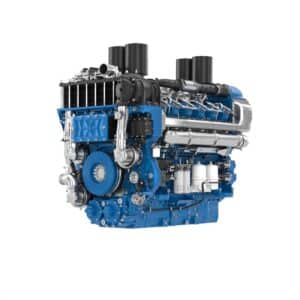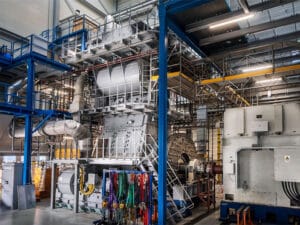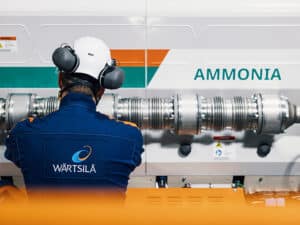
Op-Ed: Methanol supply can meet growing shipping demand
Written by Heather Ervin
Anita Gajadhar, Managing Director, Marketing, Logistics and Shipping, Proman (left); Erik Hånell, CEO, Stena Bulk (right)
By Erik Hånell, CEO, Stena Bulk and Anita Gajadhar, Managing Director, Marketing, Logistics and Shipping, Proman
Methanol is already available and viable as a long-term alternative fuel for shipping
Concerns have been raised that demand from other industry sectors may limit methanol’s future availability for shipping. However, methanol demand has doubled in the last decade, driven to some extent by fuel markets but to a larger extent by the Methanol-to-Olefins process, particularly in China. Production has ramped up to meet demand, and this demonstrates that global methanol production—including low-carbon and renewable methanol—can and will ramp up again to meet shipping’s demands.
The methanol industry spans the globe, with production in Asia, North and South America, Europe, Africa and the Middle East. Global production has increased annually over the last few years. In 2022, methanol production is estimated to reach over 111 million metric tons, an increase of nearly four percent over the previous year. Since 2017, global production of methanol has grown by roughly 22.6 million metric tons.
Conventional methanol from natural gas is cost-competitive today.. Global producers like Proman are already ramping up investments in lower-carbon and renewable production capacity, and this is where the industry will see a lot of growth over the coming years.
All forms of methanol will play a role in shipping’s transition to 2050. Methanol made from natural gas can be blended with increasing quantities of very low carbon “blue” methanol made using carbon capture and storage in the next 5-10 years. In the next 15-20 years, much greater quantities of fully sustainable green methanol, made using renewable energy or sustainable biomass, will be available and increasingly cost competitive as economies of scale kick in.
Shipping is accustomed to fuels of variable quality and combustion characteristics can change from bunkering hub to bunkering hub. Because it is a single molecule, methanol behaves the same regardless of its provenance, providing a high degree of technical certainty and operational flexibility. And all forms of methanol can be blended, creating a proven decarbonization pathway to 2050.
Arguably against the grain of popular commentary, methanol is already well understood in the maritime segment and is available at over 120 global bunkering ports, including Singapore, Algeciras, Houston and Rotterdam.
Expansion continues. In 2022, the Proman Stena Bulk joint venture vessels Stena Pro Patria and Stena Pro Marine became the first ships to bunker methanol in South Korea. The bunkering was executed despite South Korea not being a methanol-producing country, and neither vessel was carrying methanol as cargo. The fuel’s availability in Ulsan comes as a clear indicator of the growing and already widespread availability of methanol for owners and operators interested in reducing particulate matter, SOx and NOx emissions.
There is a low barrier to entry for infrastructure and tankage and, in the near term, tankers will be able to bunker methanol using the same procedures they use to load cargo. A huge amount of effort is being invested by producers and the marine fuel market to expand methanol storage capacities globally and establishing bunkering guidelines and infrastructure for both truck-to-ship and ship-to-ship bunkering.
Two more Proman and Proman Stena—Stena Promise and Stena Prosperous—have followed in 2022. Two further vessels will be built by Q1 2024. All of these ships are using methanol full-time in their normal operations.
From a vessel perspective, the good news is that it is already relatively easy, with the right knowledge, to build ships that can burn methanol. The Proman Stena Bulk joint venture is leveraging Stena Bulk’s technical expertise and the Stena Sphere’s pedigree in methanol vessel operation to prove that the barrier to entry for methanol operation has been considerably lowered.
Indeed, that methanol expertise stretches as far back as 2015, when Stena Germanica became the first ro-pax vessel to be converted to run dual fuel on diesel and methanol.
By operating vessels using methanol today, we are proving that it is more than a far-off concept. Doing this will drive the growth of the structures that any future fuel needs to be used at scale, including regulation, bunkering guidelines, infrastructure and healthy demand.
The challenge is now for the sector to do this widely and for us to collectively ensure that methanol moves from being the preserve of progressive, fast movers to become a truly mainstream marine fuel option.




